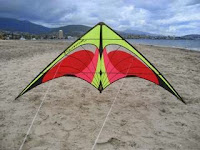How DO you get that chain from one ring to another?
You might very well ask.....
Bike jargon definitions:
Shifter
The connection from the handle bars to the derailleur. When you move the shifter, it pushes or pulls on the derailleur which moves the chain up or down the cogset/gears.
Derailleur
The mechanism that pushes the chain from one ring to another.
Shifters
There are all kinds and shapes of shifters. They can be mounted just about anywhere you can reach and there are even electronic battery powered ones that do the “shifting” for you. They all have the same goal: move the chain from one ring to another.
- Bikes with 1 front gear and multiple back gears will have 1 shifter for the rear gears.
- Bikes have multiple front gears and multiple back gears will have 2 shifters. One shifter will move the front derailleur which moves the front set of gears and the other shifter moves the rear derailleur which moves the rear set of gears.
- The front gear shifter is on the left side of the handle bars
- The rear gear shifter is on the right side of the handle bars.
There are two major categories of shifters: Twist Shifters and Indexed Shifters.
Twist Shifters
These shifters are mounted on the handle bars and you twist forward/back to move the derailleur. Some have “notches” or “markers” to show what gear you in. This is a “by feel” shift - twist until it shifts.
I call these: motorcycle type shifters or "varoom varoom" shifters.
Index Shifters
Index shifters are click to shift. They are designed so that each click moves the chain. You don't have to guess and you don't have to twist anything. Click and Shift is as easy as Swish and Flick.
Some newer style shifters have a single unit with the shifter and brake all-in-one package. The brakes are on a trigger pull and there are one or two side levers that you push to shift.
 |
| Integrated Shifters |
Derailleurs
Now for the boogeyman of multigeared bikes: The Derailleur
The derailleur is the mechanism that moves the chain from ring to ring. It's very old tech dating from the late 1800s. It just looks “scary”.
The front derailleur has a slightly different design than the rear and is a bit easier to “get acquainted with” than the rear one, which looks worse than it is.
 |
| Front Derailleur |
The front derailleur consists of a narrow rectangular box. The chain threads through the narrow box. The box is connected via a very tight spring to a cable that goes to the shifter. When you move the shifter, you move the cable, the cable then moves the very tight spring which moves the rectangular box. The long edges of the box push against the chain and “de rails” it until it catches on the next gear.
 |
| Rear Derailleur |
The rear derailleur is a bit more scary than the front one. The rear derailleur has 2 pulleys on a very tight spring. The bike chain curves around the rear gears and threads in an “S” curve around the 2 pulleys. The chain has to be long enough to go from the biggest gear in front to the biggest gear in the back. When you move the chain to a smaller gear the two pulleys take up extra slack in the chain. Like the front derailleur, when you move the shifter, you move the cable that connects to the derailleur, the cable then moves the very tight spring and swings the mechanism in/out until the chain “de rails” and catches the next gear.
Just like in the song:
Music Goes 'Round and Around
I push the first valve down
The music goes down and around
Whoa-ho-ho-ho-ho-ho
And it comes out here
The Derailleur Song
You push the index down(lol No. There's no such song... yet)
the chain goes round and around
Whoa-ho-ho-ho-ho-ho
And the derailleur makes it come out here
Of course, some of us (ahem, like moi) want to know:
Can you tinker with this?
Yes, you can but no you shouldn't.
At least not at first and especially not if you bought a Pretty Good Bike or a Great Bike.
Tinkering with the derailleurs is a very very fast path to the Not Fun category. Take your bike to a bike repair shop, preferably the one where you bought it, and get them to adjust the derailleurs. It will take them only a few minutes to fix any issues you have. For the amateur it will take hours, days and perhaps never, if you seriously damage the mechanisms. Once seriously damaged your only recourse is to replace them.
There are good maintenance manuals and lots of DYI on the web describing in detail what all the adjustments are. You shouldn't need to make any adjustments provided you take care not to damage the mechanisms. If you have to lay your bike on it's side, always place the gear side up. Don't lean the gear side of your bike against anything that will push on the derailleurs, and take extra care not to bump the rear derailleur.
If you want to learn about how to adjust the derailleurs, REI.com has a great fee based hands-on class that covers the derailleurs. You get to tinker under the guidance of a certified bike repair specialist who can rescue your bike from that “just one more tick will do it” failure.
For a good starting book I enjoy “Idiot's Guides: Bike Repair and Maintenance Paperback (June 3, 2014) by Christopher Wiggins”. Some bike maintenance manuals just have black and white diagrams or photos that are teeny weeny images which may save the publisher on the price of colored ink but doesn't help the reader much as you need an electron microscope to view them. This book is just right: it has easy to understand explanations and lots of big clear pictures.
 |
| Bike Diagram |

